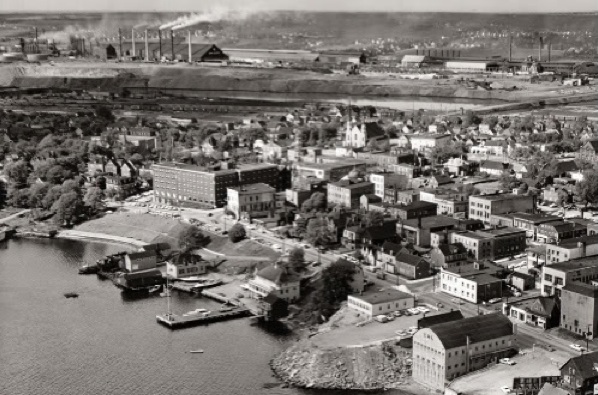
To provide a glimpse of insight into what is at stake now, the current ICSP is available for download here.
The plan as posted is a lengthy document highlighting some of the challenges and opportunities faced by the region. The goals listed in the plan are reflections of the consultation process, but due to the limited timeline within which it was prepared, the concrete details are still yet to be designed. Since the plan was submitted as a stand-alone plan, it also needs to be implemented into the planning and bylaws of the CBRM, once specific tasks are mined from the plan’s somewhat vague recommendations. This is where you come in. It is time to maintain the motivation sprung from the establishment of a sustainable strategy for the future of CBRM, to ensure that the plan was not just submitted as an opportunity to cash in on the Federal Gas Tax Revenues, but plans to use those revenues to build and maintain a community in a manner that won’t impede or hinder future generations. That, after all, is what sustainability really is. The original plan, which had been rejected, is still on the CBRM website on the Mayor’s page and can be downloaded here. Although much of the document reflects similar sentiments to the current plan, there seems to be an underlying misunderstanding as to what the definition of sustainable really is. It depicted some of the realistic challenges we as a municipality face, and some good points are raised, but there are some touchy comments, which thus became points of contention.
I grew up here before the CBRM was one conglomerate, watching, with a sense of futility, while decisions were made that were questionable if not idiotic. I don’t know about you, but I’m ready to start packing up the era of planning without foresight; I’m ready to say goodbye to the days of business-as-usual with no regard for the effects on the life of a community, or the health of its people, or the impact on the ecosystem. I’m ready to dilute the misconceptions between communities, and start to examine our assets, strengths, and appreciate what makes us special. How about you? Do you have a positive vision for the CBRM? Have wild ideas? The time is now to step closer to what regional council is doing, to make sure planning is implemented with the best interests of the community at heart. Political scientist Dr. Tom Urbaniak (CBU) states, “the consultants’ analysis is slender, the timelines are few, and most of the recommendations are vague and not prioritized. But for the first time in years the CBRM council may have decided to seize a moment and start setting a comprehensive agenda for the region, start harnessing the community’s creativity. That’s why what comes next is so important.”
The immediate next step in the process is to determine, by council vote, if the current ICSP committee will remain the same. Councilor Ray Paruch, chair of the committee, stated “I’ve been sitting on council since 1995, and I’ve never seen it this united.” He said if the committee remains the same, they plan to follow the recommendations laid out by the ICSP, and consult key players who work or invest their time in each of the four “pillars of development” – Social, Cultural, Economic, and Environmental. So, knowing this, if you consider yourself a key player, get on their radar.
According to the CBRM website, council meetings are open to the public and occur “once a month on the third Tuesday” at 6pm in the Council Chambers (2nd Floor of the Civic Centre, 320 Esplanade, Sydney). My calculations would place this forthcoming meeting to be April 20. Hope to see you there. I think a critical mass of folks present at such meetings would at least serve to remind all involved that the citizens are paying attention to what they are doing.


Terry Smith says
Great article Yvette!
A few years ago, I got to see Richard Florida, a noted author and expert in sustainable economic development, speaking in Halifax. In his book, Rise of the Creative Class, he demonstrates that communities that are growing today have a number of things in common:
– They have a robust creative community
– They are open and embracing to multicultural residents
– They are focused on innovation and technology with an entrepreneurial mindset
– They are open and accepting to the homosexual community
In the Cape Breton Regional Municipality, we have a number of these traits, but have some work to do on the other areas. I haven't read the ICSP yet, but I hope it focuses on these elements.
While economic development has much to do with having a solid strategy, it is equally important to have strong leadership that sets a tone for the entire community with a positive outlook and can-do attitude. It's refreshing to see a Council that is unified and willing to take the steps to put a plan and vision for the future in place. They should be commended and encouraged to continue on this path.